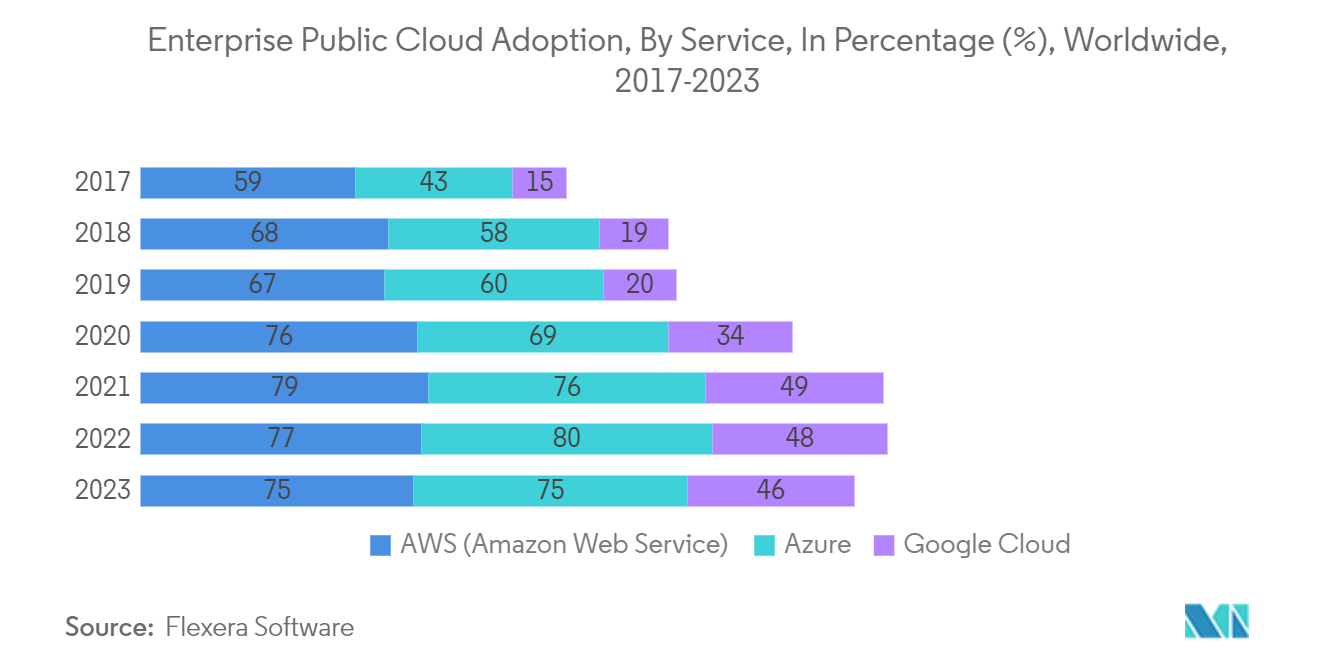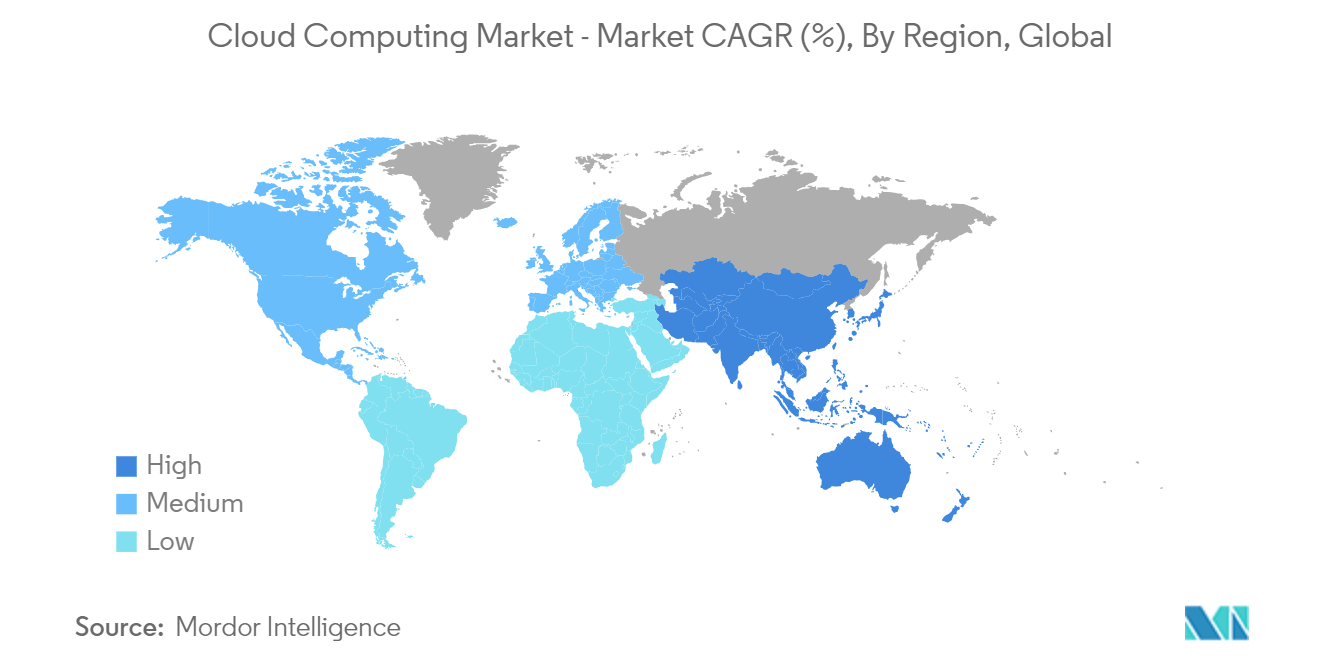Market Trends of Cloud Computing Industry
Business Integration with Cloud Accelerating Digital Transformation Across Industries
- Cloud computing enhances digital transformation by evolving it from merely adopting new technology to a comprehensive restructuring of processes, tools, and experiences in a remote, virtual environment. Cloud solutions improve security, enhance user experience, and protect data integrity. Consequently, businesses are increasingly incorporating cloud technologies into their operations, driving the growth of the cloud computing market.
- In this digital age, companies strive for agility by integrating new technologies. A significant shift in this endeavor is the migration to cloud environments. Utilizing the cloud involves obtaining embedded connections and intelligence, which enables the interoperability of smart operations and establishes a solid foundation for digital services connected to the cloud.
- Unlike the traditional on-premises server models that depend heavily on manual operations, cloud computing offers significant opportunities for automation. The cloud simplifies various operational aspects, including platform-as-a-service models, infrastructure-as-code methodologies, automated backups, version control provisioning for workflows, and security control administration through user access.
- Cloud computing has emerged as a transformative force for businesses aiming to develop supply chain management (SCM) swiftly and effectively. For instance, as part of a multi-year partnership in May 2024, Safran Passenger Innovations introduced RAVE Cloud Services, a sophisticated cloud-based suite designed to enhance its In-Flight Entertainment and Connectivity (IFEC) platform. This suite includes two primary components: distribution services and edge cloud computing services. The infrastructure deployed on the ground and aircraft ensures a scalable, reliable, and flexible service framework. It is engineered to facilitate the efficient transfer of large volumes of data to and from the aircraft and to process and store significant amounts of data onboard.
- Since its inception, numerous banking and fintech entities have steadily transitioned to cloud technology. The financial sector is experiencing rapid growth in data creation and utilization. This transition enhances transparency and gives consumers greater control over auditing processes and data management. Additionally, it offers a more flexible method for data classification. In the healthcare segment, cloud integration can significantly benefit various functions, including telehealth, virtual care, medication adherence, anti-theft and anti-counterfeiting measures for drugs, resource efficiency, personal data privacy, and the standardization of medical records.
- Companies such as Amazon, Google, and Oracle provide advanced cloud infrastructure and services to meet the increasingly intricate needs of consumers. For instance, in 2023, Flexera Software's State of the Cloud Report highlighted that 75% of enterprises were turning to Microsoft Azure for their public cloud needs. These technology giants, often referred to as hyperscalers, include AWS, Microsoft Azure, and Google Cloud and dominate the global cloud computing landscape.

North America is Expected to Hold a Major Market Share
- Over the past few years, North America has controlled the cloud computing market. Companies in the United States prioritize digital transformation. They are often seen as early adopters of advanced technologies like the Internet of Things, additive manufacturing, big data analytics, connected industries, artificial intelligence, machine learning, virtual reality, and the newest telecommunications technologies like 4G, 5G, and LTE.
- The region has been facing increasing data breaches in recent years. For instance, according to the Identity Theft Resource Center, in 2023, the number of data compromises in the United States stood at 3,205 cases. Meanwhile, over 353 million individuals were affected in the same year by data compromises, including data breaches, leakage, and exposure. Such instances are likely to restrain the adoption of cloud computing in the region.
- Businesses in the United States are collaborating to expand their operations and strengthen their presence in the global marketplace. Opportunities for the United States are expected to increase as organizations invest more in IT infrastructure and cloud services and as the country promotes Cross Border Privacy Rules (CBPR).
- Government institutions in the United States are rethinking their economic models to provide better services to citizens. According to the federal cloud computing strategy, the government has implemented the CloudFirst policy to accelerate cloud adoption. The increased use of cloud services and edge computing is replacing the need to add more infrastructure to data centers, which are already crowded with various platforms and vendors across US government agencies of all sizes.
- The region also has several innovations catering to technologically advanced consumers' requirements. For instance, in May 2024, the US General Services Administration (GSA) announced changes in the membership and leadership of the Federal Secure Cloud Advisory Committee (FSCAC), effective May 15, 2024. The committee, which includes industry and federal agency representatives, advises the Federal Risk and Authorization Management Program (FedRAMP). Its role is to ensure that federal agencies effectively coordinate the adoption, authorization, monitoring, acquisition, and security of cloud computing products and services. This coordination helps agencies meet their mission and administrative priorities.


